Ski: 2023-2024 Salomon QST 92, 184 cm
Test Location: Crested Butte Mountain Resort, CO
Days Skied: 7
Available Lengths: 152, 160, 168, 176, 184 cm
Blister’s Measured Tip-to-Tail Length (straight-tape pull): 183.0 cm
Stated Weight per Ski: 1940 grams
Blister’s Measured Weight per Ski: 1893 & 1897 grams
Stated Dimensions: 129-92-117 mm
Blister’s Measured Dimensions: 129.0-92.0-117.0 mm
Stated Sidecut Radius (184 cm): 16 meters
Measured Tip & Tail Splay (ski decambered): 55 mm / 19 mm
Measured Traditional Camber Underfoot: 6 mm
Core Materials: poplar + carbon/flax stringers + titanal binding reinforcement + fiberglass laminate
Base: sintered
Factory Recommended Mount Point: -9.3 cm from center; 82.2 cm from tail
Boots / Bindings: Tecnica Mach1 MV 130, Fischer RC4 Pro 130 MV BOA, Atomic Hawx Ultra 130 / Salomon Strive 11

Intro
Salomon’s QST collection has been around since 2016, serving as the brand’s all-mountain / freeride series, though it’s gone through quite a few changes over the years. The most recent overhaul started with the 21/22 QST 98 and QST Blank, and those changes carried over to the rest of the QST skis for the 22/23 season, with the series returning unchanged for 23/24, apart from new graphics and the addition of the new, lightweight QST Echo 106.
We’ve posted reviews of several iterations of the QST 98 and QST 106, but this season we got on the latest QST 92 to see how much of its wider siblings’ traits it carried over into a narrower package, and what the end result would be.
But before we get into our on-snow impressions, let’s quickly discuss the design of the QST 92.
What Salomon says about the QST 92
“Versatile, strong, and spirited. Sound like you? We’ve redesigned the QST 92 to complement you, the modern freerider. A new profile boasts a responsive, yet supple ride, while the lightweight 92mm waist and freeride shape are perfect for cruising the bumps or exploring the side country. Where will you take the new QST 92?”
Construction
The QST 92 features a very similar core construction as the wider QST skis: poplar wood core, carbon / flax (aka, “C/FX”) reinforcements, a small titanal layer for binding reinforcement, fiberglass laminate, Salomon’s “Double Sidewalls” underfoot, and a sintered base. The one difference is that the QST 92 reportedly doesn’t feature cork inserts at the tips and tails, which the wider models do.
Shape & Rocker Profile
This is where we see the biggest changes from the 19/20–21/22 QST 92. The latest (22/23–23/24) QST 92 features more early tapering at the tips and tails, equating to a shortened effective edge. It also has deeper rocker lines, particularly through the tail.
Compared to the whole category of ~90mm-wide skis, the QST 92 stands out for having more tapered and more deeply rockered tips and tails than most of its competitors, though it’s just a bit more dialed back in those regards than the wider QST 98.
Flex Pattern
Here’s how we’d characterize the flex pattern of the QST 92:
Tips: 7-7.5
Shovels: 7.5-8
In Front of Toe Piece: 8.5-10
Underfoot: 10
Behind the Heel Piece: 10-8.5
Tails: 8-7.5
The overall flex pattern of the QST 92 is pretty similar to the QST 98, though the QST 92 is notably stiffer at the tips and tails. It’s not an extremely stiff ski by any means, but its extremities also aren’t particularly soft, either.
Sidecut Radius
At 16 meters for the 184 cm length, the QST 92’s stated sidecut radius is on the tighter end of the spectrum, though it’s not pushing into slalom-ski territory in that regard, and there’s more to its on-snow performance than just that one number (keep reading).
Mount Point
The QST 92’s recommended mount point is about -9 cm from true center, which is pretty rearward / traditional, but not quite as far back as Salomon’s more directional, metal-laminate Stance skis.
Weight
The 184 cm QST 92 weighs about 1900 grams per ski; for this class, that’s neither super light nor super heavy — there are lots of other skis around this width that come in at similar weights.
For reference, here are some of our measured weights (per ski in grams) for a few notable skis. As always, keep in mind the length and width differences of each ski listed to keep things more apples-to-apples.
1780 & 1800 Line Blade Optic 92, 182 cm (22/23–23/24)
1781 & 1795 Atomic Maverick 100 Ti, 180 cm (21/22–23/24)
1807 & 1840 Atomic Bent 100, 188 cm (18/19–23/24)
1808 & 1823 Shaggy’s Ahmeek 95, 180 cm (21/22–22/23)
1810 & 1828 Armada Declivity 92 Ti, 180 cm (20/21–23/24)
1824 & 1835 Black Crows Serpo, 180.1 cm (21/22–22/23)
1849 & 1887 DPS Pagoda 90 RP, 184 cm (20/21–22/23)
1854 & 1863 Salomon Stance 90, 182 cm (23/24)
1880 & 1887 Blizzard Rustler 9, 180 cm (23/24)
1883 & 1906 Season Aero, 180 cm (20/21–22/23)
1893 & 1897 Salomon QST 92, 184 cm (22/23–23/24)
1900 & 1908 Atomic Maverick 95 Ti, 180 cm (21/22–23/24)
1915 & 1937 K2 Mindbender 89Ti, 182 cm (22/23–23/24)
1925 & 1934 Black Crows Camox, 186.5 cm (19/20–22/23)
1933 & 1943 Norse Enduro, 188 cm (20/21–22/23)
1946 & 1968 Salomon Stance 96, 182 cm (23/24)
1952 & 1964 Folsom Cash 93, 185 cm (22/23–23/24)
1976 & 2028 Parlor Cardinal Pro, 182 cm (19/20–21/22)
1985 & 2006 Parlor Cardinal 100, 185 cm (16/17–21/22)
1990 & 2036 Blizzard Brahma 88, 177 cm (20/21–23/24)
1998 & 2044 4FRNT MSP 99, 181 cm (17/18–22/23)
1999 & 2060 Line Blade, 181 cm (20/21–23/24)
2008 & 2015 Folsom Spar 88, 182 cm (19/20–23/24)
2010 & 2023 Moment Commander 98, 182 cm (20/21–22/23)
2024 & 2112 Dynastar M-Free 99, 185 cm (21/22–23/24)
2043 & 2089 Volkl M6 Mantra, 177 cm (21/22–23/24)
2047 & 2082 4FRNT MSP 91, 181 cm (22/23–23/24)
2053 & 2059 J Skis Fastforward, 181 cm (22/23)
2054 & 2063 Salomon QST 98, 189 cm (21/22–23/24)
2077 & 2096 Line Blade Optic 96, 184 cm (22/23–23/24)
2128 & 2186 J Skis Masterblaster, 181 cm (21/22)
2165 & 2186 Wagner Summit 97, 182 cm (21/22–23/24)
2178 & 2195 Volkl M6 Mantra, 184 cm (21/22–23/24)
2256 & 2284 Nordica Enforcer 94, 186 cm (20/21–23/24)
2281 & 2284 Blizzard Bonafide 97, 177 cm (20/21–23/24)
Now, onto on-snow performance:
FULL REVIEW
Luke Koppa (5’8”, 155 lbs / 173 cm, 70 kg): We started spending time on the 184 cm QST 92 at Blister Summit 2023 and continued skiing it during the rest of the season, all the way through closing weekend. That meant getting it on a mix of everything from fresh, dry pow to hardpack and some excellent spring slush. Here’s what we’ve found:
Groomers
Luke: At 92 mm underfoot, the QST 92 falls into a class of skis that are often fairly piste-oriented, but in the case of this ski, it’s actually the opposite. But while the QST 92 really stands out in its class for its off-piste performance, it’s still plenty of fun to carve.
On easily edgeable groomers (think fresh mid-winter corduroy or late-day spring slopes), the QST 92 is capable of laying down high-edge-angle turns and can make a pretty wide variety of turn shapes. Its 16-meter sidecut radius looks tight on paper, but on snow, it feels a bit longer; while I could carve some pretty tight turns on it, its significantly tapered and rockered tips and tails mean that it’s really easy to feather it into longer turns when you feel like it.
Like the wider QST skis, turn initiation on the QST 92 is a fairly subdued experience. Unlike a minimally tapered, minimally rockered ski with a similarly tight sidecut radius, the QST 92 isn’t super quick to pull you into a turn and across the fall line. Instead, it seems to wait for a bit of skier input before it really initiates a turn. This helps in terms of turn-shape versatility and keeping the ski from feeling hooky, but if you’re after a really engaging, precise, and/or powerful carver around this width, you’ve got plenty of better options.
On very firm groomers (e.g., scraped-off end-of-day scenario, or early spring mornings), most of what I’ve said above carries over. However, the QST 92 requires a bit more finesse to get it to really dig into firm snow, relative to the numerous more traditionally shaped and cambered skis in this class. The QST 92 is happy to just skid / slide turns when it’s really firm, though I found that I could get an impressive amount of edge grip from the midsection of the QST 92 — at least once I figured out how and where to really drive it. Like the wider QST skis, it feels like most of the QST 92’s edge hold comes from the stiff portion around the bindings, though with the 92, I found it easier and more intuitive to carve on firm snow, since that portion felt longer than it did on the wider QST skis. Additionally, the QST 92 feels notably quicker edge-to-edge and “snappier” overall, thanks to its narrower waist and tighter sidecut radius.
So, all that is to say: don’t get the QST 92 if what you’re after is basically a wider version of a carving ski. The QST 92 is below average for this width when it comes to turn initiation, edge hold, and overall precision. However, I still really enjoyed this ski on piste, especially once I learned how to best leverage the strong midsection of the ski. There are a few skis in this width that feel very off-piste-oriented, and I’d put the QST 92 in that group, but it doesn’t feel as off-piste-specific as some of those other outliers.
Dylan Wood (5’10.5”, 155 lbs / 179 cm, 70 kg): Of all the conditions and terrain in which I tested the QST 92, groomers felt the least inspiring. I spent my time on the QST 92 in chalky, firm, mid-winter conditions (which were also the days we shot the photos in this review), and the groomers I had available were mostly scraped off and very firm, but not quite icy.
The QST 92 wasn’t very exciting on groomers, as it did not really pull me into a turn as Luke mentioned, and its edge hold wasn’t encouraging me to really lay it over. I’m sure it’s much more fun on softer groomers, but if you’re hoping to carve hard on firmer piste, there are definitely better options out there. But the QST 92 really shines off piste, so I don’t think its lack of groomer performance is a huge deal.
Moguls, Trees, & Tight Terrain
Luke: This is one of the main areas where the QST 92 really sets itself apart from the competition. Especially when compared to other ~88-95mm-wide skis, the QST 92 feels very, very maneuverable overall. Its tails are easy to release and pivot, its swing weight is pretty low, it’s got a pretty big sweet spot, and it’s generally just easy and fun to be on when navigating all sorts of tight terrain.
I could see a wide range of skiers enjoying the QST 92 in bumps and trees, mostly because of how adaptable its flex pattern feels. On closing weekend when my technique wasn’t exactly, ahem, perfect, it felt like a great fit — I could slip and slide it through all sorts of terrain without worrying about having to always be driving the shovels. But when I was trying to ski fast and hard, I never felt like I was overpowering the ski.
I think the QST 92 is the most fun when I’m pushing it pretty hard, loading it up between turns, and catching little bits of air during transitions (i.e., an “aggressive but dynamic” style). However, it’s perfectly happy to stay on the snow and just easily pivot around. Those who prefer a really precise ski, where you can feel the whole length of the ski engage during each turn, may find it too loose / surfy / imprecise, but I never found it to be excessively maneuverable. I’d be happy to navigate any of Mt. Crested Butte’s tight, steep, and consequential zones on this ski, in pretty much any condition apart from super deep pow / chop.
Dylan: Absolutely. The QST 92 is really easy to ski and feels at home in trees and bumps, especially compared to other ~90mm-wide skis. It is quick, easy to pivot, and forgiving. Beginner and intermediate skiers have a lot to like here, but what might have been most impressive was that it wasn’t super easy to overpower when skiing hard, as Luke mentioned.
Powder & Soft Chop
Luke: For its width, the QST 92 is an excellent pow ski. I was on it on a day when I was surprised to find about 6-10” (15-25 cm) of fresh, slightly wind-affected snow on Crested Butte’s steeps, and I was even more surprised by how well the QST 92 handled it. On wide-open runs like Headwall, I could comfortably make GS turns without worrying about the tips diving or the ski hooking up too much, but it was also impressively easy to slash around at slower speeds in tighter spots.
I’d be wishing for a wider ski if the pow cam was showing roughly a foot or more of fresh (especially once that snow got cut up), but there are very few skis I can think of in this width class that I’d rather ski on a deep day.
Now, as the pow gets tracked out, the QST 92 starts to struggle a bit more, but it’s still really good for what it is. I could ski the QST 92 quite hard in low-density chop that was shallower than about 8” (20 cm), but in heavier and/or deeper chop, it does start to get bogged down and knocked around a bit. I think its stability in this scenario is impressive, especially considering how maneuverable and surfy it is, but it’s not a charger by any means. Something like the Salomon Stance 90 or 96 does a better job of powering through piles of cut-up snow, though those skis aren’t nearly as maneuverable as the QST 92.
All in all, the QST 92 really impressed me when it came to soft snow and I don’t think I’d be desperately wishing for something wider if I skied at a place that rarely sees pow days deeper than about 8” / 20 cm.
Dylan: I never got the QST 92 in powder or soft chop, so you’ll have to join me in trusting what Mr. Koppa has said here.
Slush
Luke: The story here is similar to what I said in the Powder section — the QST 92 is a blast in slush, for all the reasons I outlined above. It’s surfy and easy to slash around, but, given that, it feels surprisingly comfortable making bigger, faster turns in soft snow.
Skis around this width can often get bogged down in soft-but-heavy snow like slush, which can be annoying, especially when you try to really lay them over on edge. To address this, some brands widen up the tips (and consequently tighten the sidecut radius) to get more flotation from the front of the ski, but this can often lead to a hooky feeling when you really push them in soft snow. However, likely because of its tapered tips and tails and not-super-soft flex pattern, I never felt these sensations on the QST 92, and it generally felt pretty dang ideal for some slushy (and somewhat sloppy) skiing throughout closing weekend.
Dylan: Same as powder and soft chop, no slush for me on this ski.
Firm Chop & Crud
Luke: This is definitely the QST 92’s weak point, but I think Salomon did an impressive job of optimizing its maneuverability without making it really sketchy in rougher conditions.
On firm, inconsistent snow, the QST 92 provides pretty good suspension (I definitely wouldn’t call it “harsh”) and retains its maneuverable ride, which makes it easy to make slower, smaller, more controlled turns when the snow is nasty. But there are many skis in this class that let you ski them harder and faster in challenging conditions, so if that’s your preferred approach, I’d look to something heavier, less tapered, and less rockered. Still, I was totally content with the QST 92 on, for example, a spring day when I was frequently transitioning between pretty firm, shaded aspects and softer, more sun-warmed ones. Especially compared to skis in its class that match its maneuverability, the QST 92 handles crud pretty well.
Dylan: Can the QST 92 charge through firm crud like it’s not there? No. Does it ever feel sketchy and/or scary in these conditions? Also no. It’s quite maneuverable and forgiving, and given that, the way it handles firm chop and crud is actually quite impressive.
Playfulness & Mount Point
Luke: The QST 92 feels like a very playful, but still directional ski. It responds best to a traditional, forward stance, but it’ll also let you ski it pretty centered in more open terrain and isn’t very quick to punish the occasional backseat turn. It also has a fairly low swing weight, is very easy to throw sideways, produces some energy when you load up the tips or tails, and even skis switch pretty well in non-deep conditions.
The QST 92 does feel a bit awkward in the air, due to its fairly rearward mount point, but it never caused me any issues (as someone who very rarely spins off any feature of consequence). There are plenty of skis around this width that are better overall when it comes to general freestyle performance, but nothing about the QST 92 felt like it was holding me back in terms of how “playful” I wanted to ski. If you do plan on taking it into the park and hitting rails, it’s worth noting that it has fairly thin edges (underfoot, our pairs measured about 2.1×1.7 mm).
As for mount point, I felt pretty content to just stick with the QST 92’s recommended line (-9 from true center). Mounted there, I could drive its shovels quite hard but still ski it somewhat centered when I wanted to. I think you could move a cm or two forward if you wanted a more playful, balanced feel, but I don’t think many people will have much reason to stray away from the recommended line.
Dylan: Luke nailed it. The QST 92 feels like a playfully directional ski. As for mount point, I skied it on the line, which felt great to me.
Who’s It For?
Luke: The QST 92 makes the most sense for folks who are looking for a fairly narrow all-mountain ski but who still prioritize performance in off-piste terrain and soft snow. And within that demographic, I think everyone from beginners to experts could enjoy it. It’s pretty easy to ski at a casual pace and is forgiving of mistakes, but experienced skiers who ski with a more active, light-on-their-feet style can still have a ton of fun on this ski. It’d make for a great complement to a narrower, more piste-oriented ski at a lower-snow area, or as a 1-ski-quiver option for those who want to spend more time off piste than on it.
Within this width class, the QST 92 definitely isn’t your best choice if you want a really precise carving ski that eagerly pulls you into each turn and launches you out of it with lots of power. On non-icy conditions, the QST 92 is still a fun piste ski, it’s just that there are so many other ~90mm-wide skis that are designed much more specifically for on-piste performance.
However, the QST 92 should be high on your list if you prefer the edge-to-edge quickness of a narrower all-mountain ski but are looking to optimize off-piste maneuverability.
Dylan: Definitely. The QST 92 makes a lot of sense for folks who will be spending a lot of time off-piste on their ~90mm-wide ski and want something maneuverable and forgiving.
Bottom Line
Salomon’s QST 92 brings much of the wider QST skis’ maneuverability and playfulness to a narrower package, but it manages to do so without feeling like some super niche ski with a design that’s mismatched to its width class. For its category, the QST 92 is exceptionally maneuverable and excellent in soft snow, but it can still be lots of fun on most groomed slopes and doesn’t feel like a one-trick pony. For certain skiers, that’ll be the perfect combo.
Deep Dive Comparisons
Become a Blister Member to check out our Deep Dive comparisons of the QST 92 to see how it compares to the Salomon QST 98, Salomon Stance 90, Blizzard Rustler 9, DPS Pagoda 90 RP, Line Blade Optic 92, Line Blade Optic 96, Folsom Cash 93, Black Crows Serpo, Folsom Spar 88, Shaggy’s Ahmeek 95, J Skis Fastforward, K2 Mindbender 89Ti, Line Blade, 4FRNT MSP 91, Nordica Enforcer 94, Blizzard Brahma 88, Head Kore 93, Atomic Maverick 95 Ti, Armada Declivity 92 Ti, Volkl M6 Mantra, & Fischer Ranger 90.
Rocker Pics:









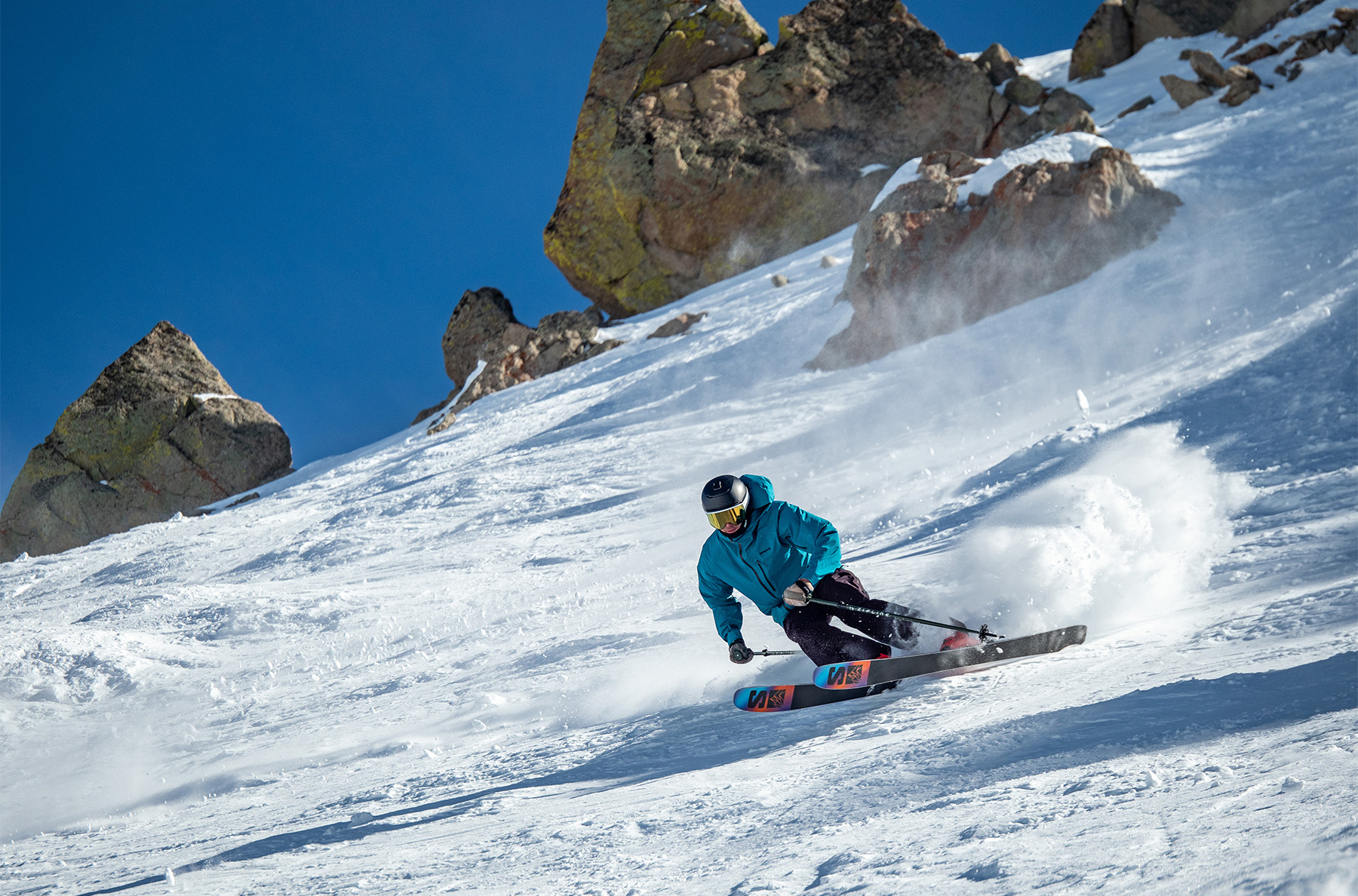


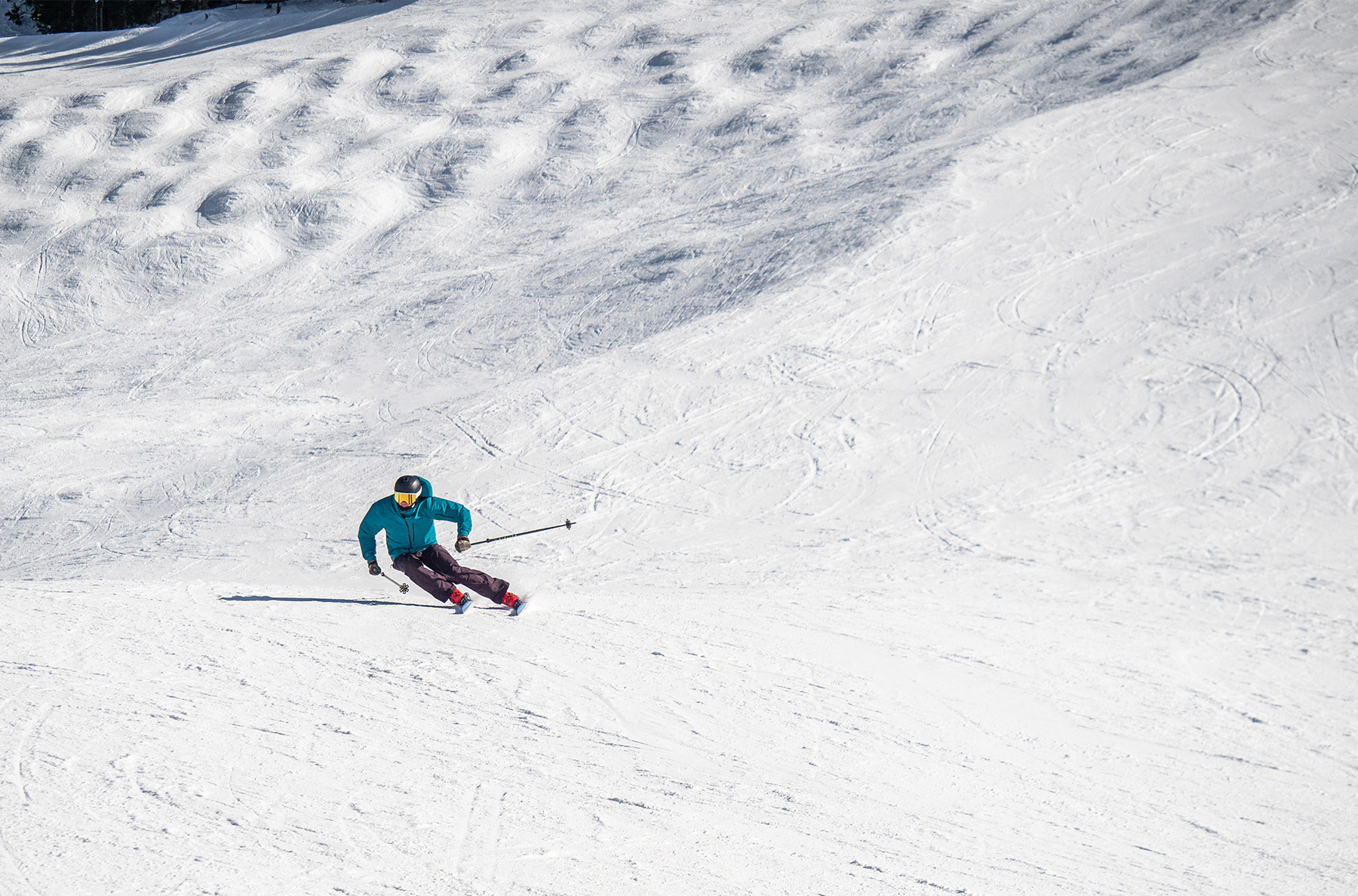
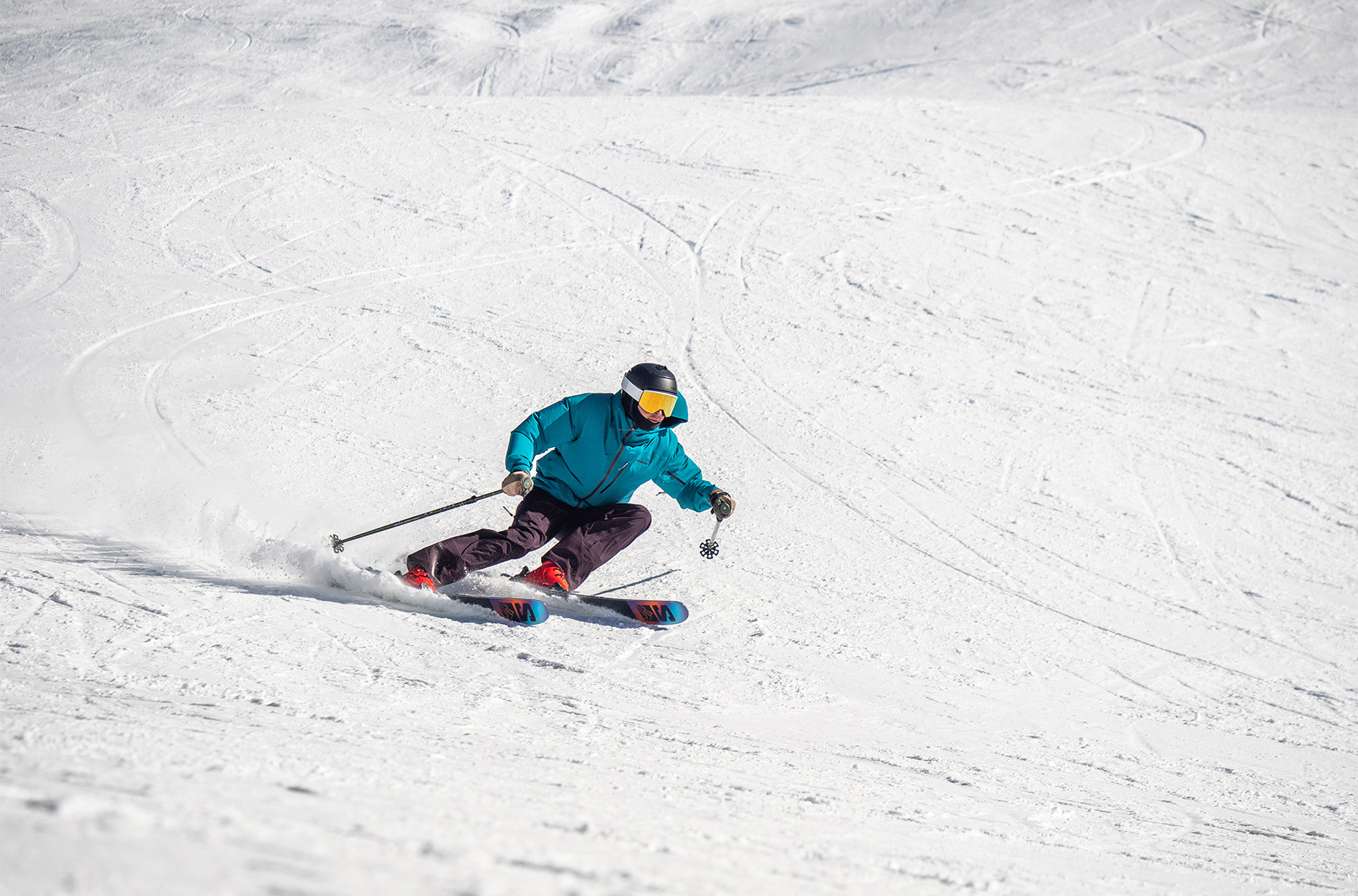
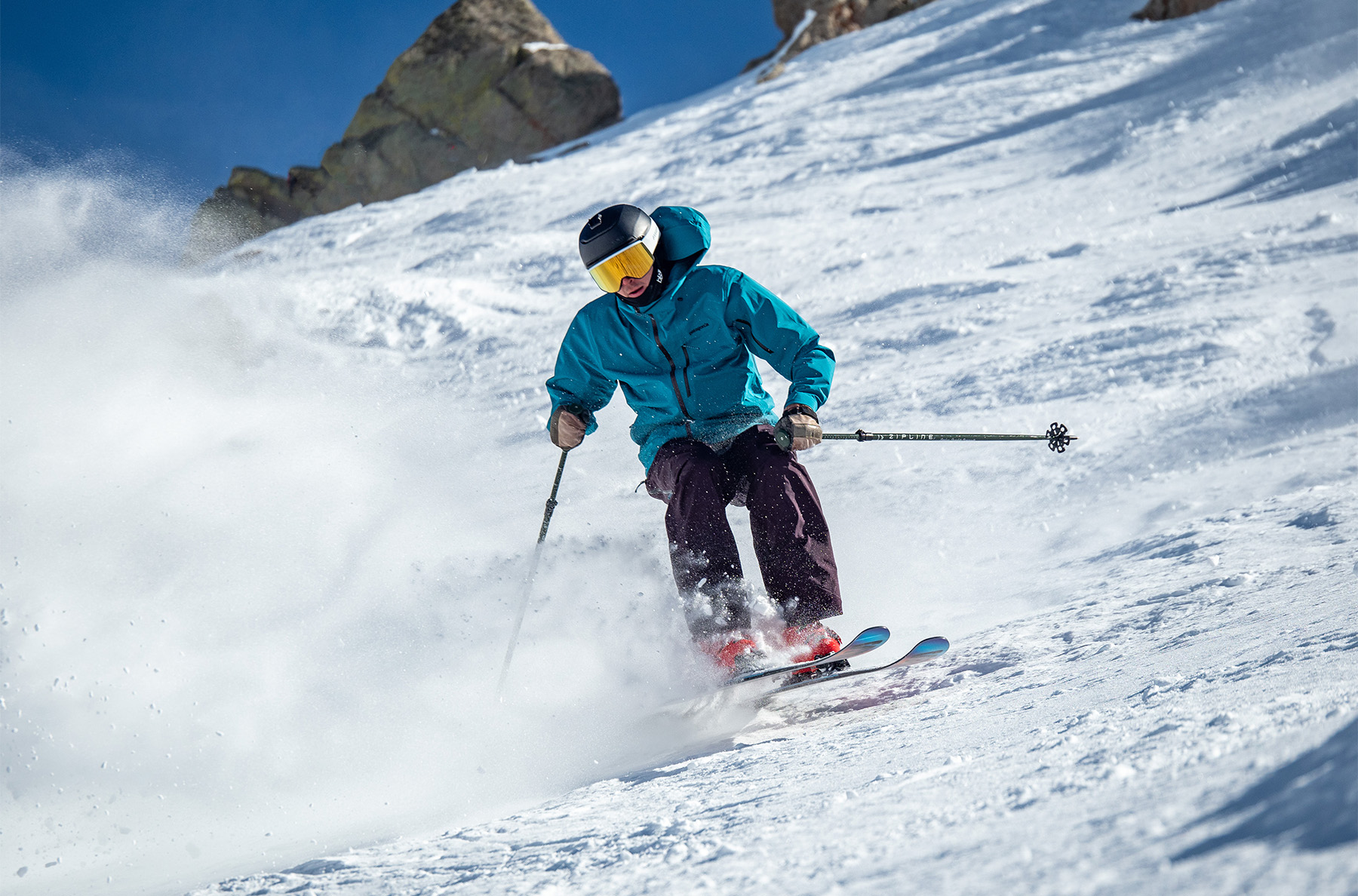
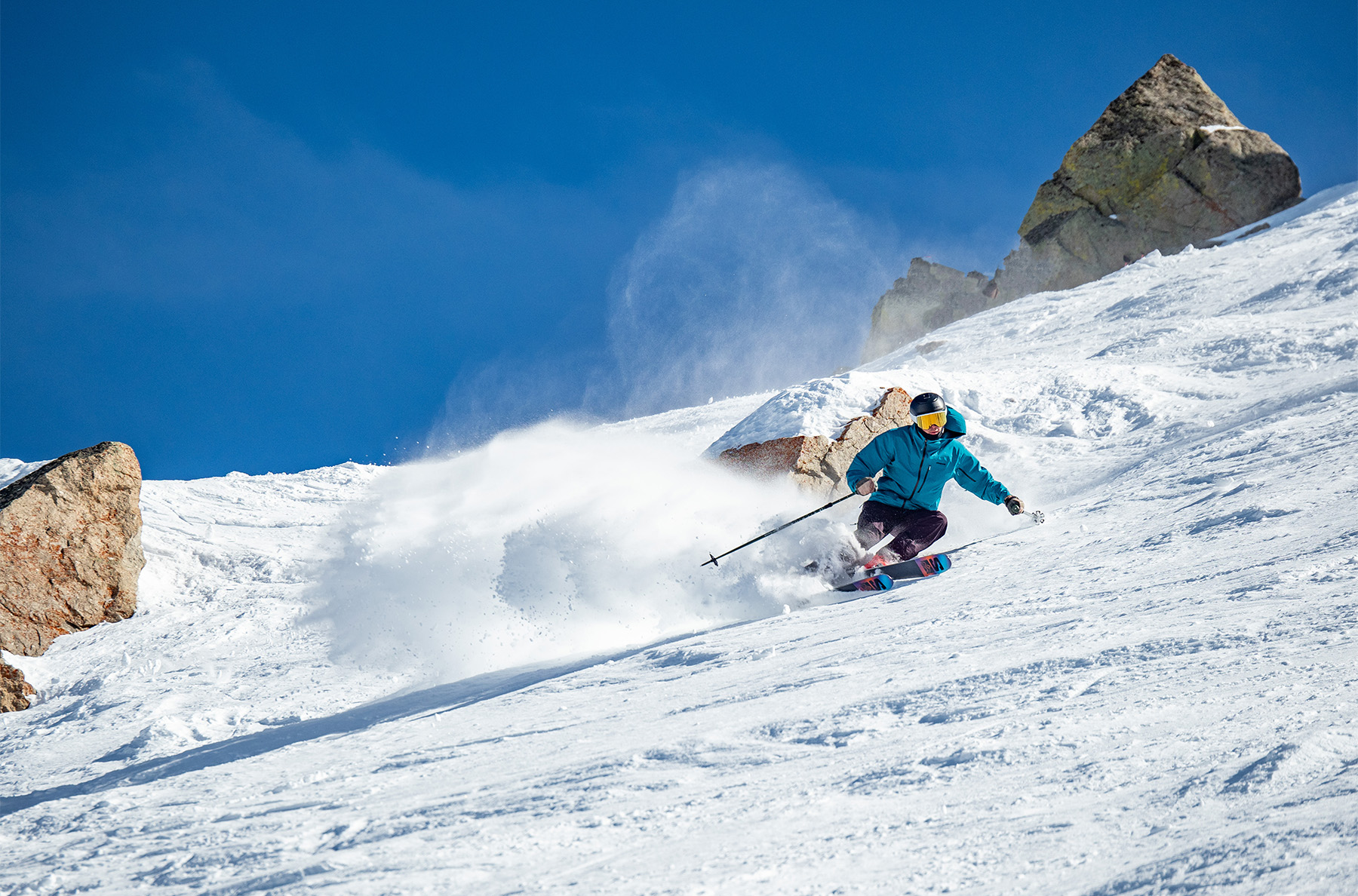
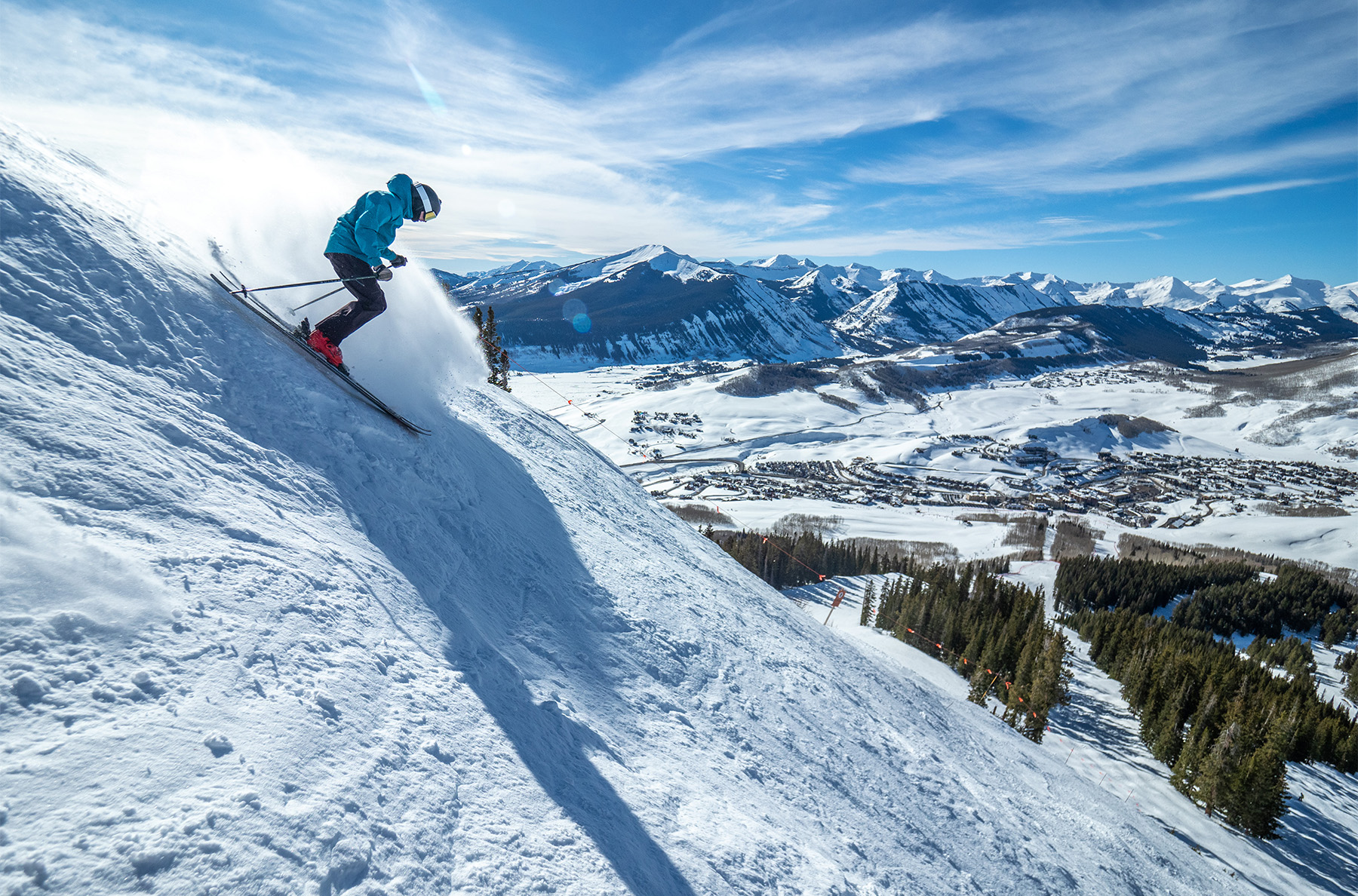
I just sold the pair I bought earlier in the season because either I or the skis suck! They did not want to turn. Felt brittle and just wanted to track straight. Impossible to pivot. I’ve been on a pair of Line Prophet 90’s in 172 the Salomons were 176. I’m 5″8″ 160 lbs. I think they were just too long or bindings could be mounted further forward, but I gave them every chance. Had the bases beveled and tips and tails detuned but it didn’t help. I’ve had none of these problems with my Line skis, so I just don’t understand???????? Appreciate your thoughts
100% a technique issue rather than a ski problem.
You just suck
You don’t suck- I had the same issues. Been skiing since I was 4 and am 31 now. I ate it on these on some steeps at Alyeksa last winter and started using my pretty old line pandora 110s after that and never had a problem. I think that I am used to wider skis and these were too narrow but I also agree with them in that they are not good in heavy or variable snow (which is typical Alaska conditions)! I don’t think they are a great “all-mountain ski”. They aren’t really amazing at a bunch of things or any singular thing in my opinion. I’m about to buy one of the Blizzard Sheevas (similar to the Rustler for men)- hoping they are a good ski for my liking and can carve a little better than my pandoras.
Very informative. I was looking forward to this ski being reviewed. I heard some really good things about this ski’s capability from other sources including a friend who bought the 2022/2023 model (same ski different top sheet). Your comments pretty much corroborated what had been said by others which is great given the regard in which I hold the Blister testers.
I am a solid advanced skier who likes to split time between piste and varioues types of off piste terrain. I ski mainly in Australia, New Zealand and Japan with increasingly more of my time being spent in the land of the rising sun. This ski does seem to fit my Cinderella foot. Another one that I am interested in is the new RMU Apostle 96. Apparently they have made some tweaks to the shape of the ski to improve its on piste performance. Any plans to review this ski before Christmas 2023?
Demoed a set of these this season and was really impressed. Completely agree that they weren’t super confidence inspiring on very firm on-piste stuff, but thought they really excelled overall. As a 45 year old guy who doesn’t ski as hard as I once did plus now lives on the east coast and doesn’t get out west more than once or twice a season, this seemed like a perfect ski for me. Only thing holding me back from buying a set is I want to try some QST 98’s.
I now skied them in the East coast around 30-40 days and in Japan 12 days.
They are a perfect off piste east coast ski imo. Really good for super tight trees, I tend to ski a lot of that with my kids and they are perfect for bushwhacking. On piste they do well as long as you keep the edges sharp except for really hard ice where they are still functional but not fun. They don’t need soft snow the platform under foot bites into everything and feel very good in icy crappy off piste snow, tips work great deflecting bushes/grass etc
In Japan they served me well except for couple really deep days when they just sunk and got stuck. Really great ski for soft moguls, have a very fun playful jump around feel to them.
They have an interesting tune coming from factory maybe that’s the reason people have issues with them? Center and tips are tuned to different angles at least that is what the shop where I get my skis tuned told me. But I like it seems to work well.
I like them so much I bought my wife a pair, she is an intermediate and she loved them because she can easily turn them anywhere she wants and they feel very relaxing to her.
I purchased these skis (168 cm … tape pull they measure 167 cm) this season and mounted Marker Squire 11 TCX demo bindings on them (so that they can be shared). Skiing on them in Northern Idaho, and they are an excellent value. I very much agree with the “Who’s It For?” and “Bottom Line” summaries (me 169 cm, 170 lbs, 63 yrs).